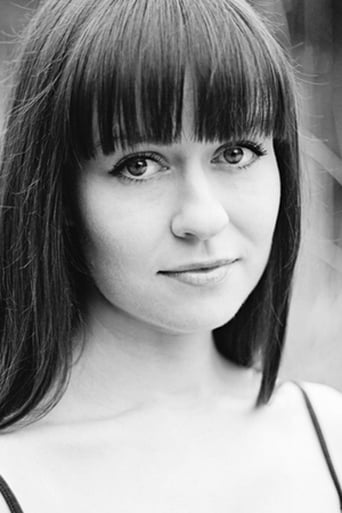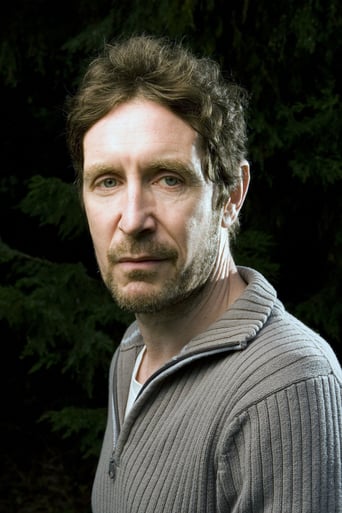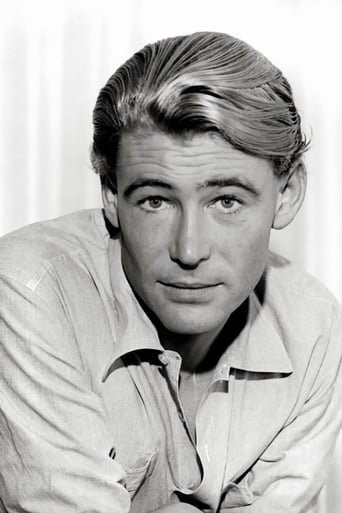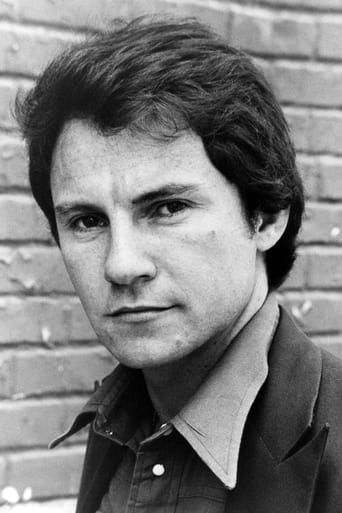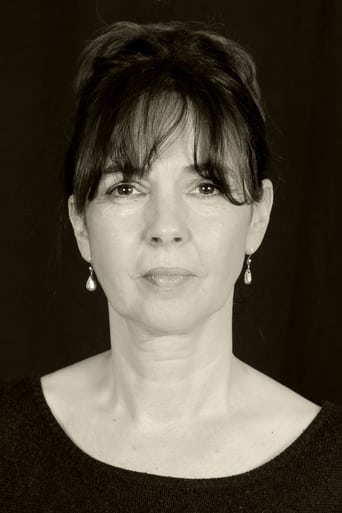Adrian Edwards
Like others writing here, I felt a bit cheated that the movie did not focus on the real "true story", which is certainly a better one for an adult audience. Perhaps it would not have had such a general appeal, and would have been less commercial. The notion that it was all a hoax, and yet true at the same time, seemed disingenuous. The story of how grief and loss in the years after the First World War led many to become self-deluded and consequently vulnerable to "psychic" charlatans is a very adult one. Houdini was a hero in the cause of stamping this shoddy business out. He was a champion of reason. I have no problems with films that alter and compress historical events for dramatic reasons, but this film actually negated the essence of the true story and wasted an opportunity. And we were deprived of the delicious final twist, when the surviving girl (by then an old lady) confessed all in the 1980s. The film was an enjoyable fantasy, and could have been presented as being "inspired by, but not based on" actual events (as were Citizen Kane and Personal Services). There is always going to be a problem with films based on true events, and in this case it seemed like a good story trashed.
aimless-46
"Masters of illusion never reveal their secrets" says Harry Houdini (Harvey Keitel) in the lyrical fantasy ''Fairytale--A True Story'' (1997). And pay attention to the things Houdini says like: "Never try to fool children. They expect nothing and therefore see everything", because his character exists to articulate the film's themes. These revolve around the need for many people to believe in the existence of spiritual concepts, the wisdom of not challenging these beliefs if they give sustenance, and how loss of the ability to see much that is hidden goes along with our loss of innocence. The innocence is stressed early in the film when an 8 year-old girl fearlessly seeks out a horribly scarred veteran on the train and gets "her corporal's" help to play a game of cat's cradle. In its best montage the film moves between, Houdini's fabled "The Chinese Water Torture Cell" illusion, a chess match, and the first-hand spiritual education of an investigative reporter. The film loosely documents the "Cottingley fairies" incident in 1917 when two English girls produced photographs that showed themselves in the presence of fairies. Sir Arthur Conan Doyle (insert Sherlock Holmes here) published the photographs when he and various experts became convinced they were authentic. Many years later the girls would confess that they had faked all but one of the photos, but they continued to claim that their fairies actually exist. 12-year-old Elsie Wright (Florence Hoath) and 8-year-old Frances Griffiths (Elizabeth Earl) are the girls. It is late in WW1 and Francis has come to live with her Aunt and Uncle because her father is missing in action on the front lines. The Wright's too are dealing with a recent loss as Elsie's brother has passed away. So both children and Mrs. Wright (Phoebe Nicholls) are primed for belief in the other world. Yes there are fairies, the viewer sees them when no people are around and we see them leaving the area when Doyle's revelations cause the property to be trampled by a hoard of both believers and skeptics. The production design and the special effects are impressive and the film is absorbing from scene to scene. The target audience is a little hard to pin down as the subject is geared to children but much of the story a bit confusing if you are not already familiar with historical figures like Houdini and Doyle. The film utilizes the tried and true device for connecting with children by giving them a story about young people who know stuff is real, even though adults don't get it. In the film the age gap between the two girls is slightly less than it was in real life, which gives their relationship a bit more believability. Even more impressive is how successful the director was in the subtle creation two very distinct personalities. Elsie is shy and artistic. Frances is confident and social. Their interplay is the film's real strength; apparently the director sensed this dynamic and worked very hard in his acting for the camera direction of the two young actresses. He kept them in character and added behavioral elements they give their characters considerable depth and dimensionality. Then again, what do I know? I'm only a child.
Smile_U_SOB
The story is true about the girls and the photos. The story is true about the photos and how they tricked people. But the fairies flying around and bathing with fins and dodging cigarettes while carrying suitcases is not true. The ghost of a child blocking a doubting reporter from framing these girls after breaking into their room is also not true. This movie should not have "A True Story" at the end. It would be like "Titanic: A True Story", simply because the ship sinking is true. This is a good movie at times, has a lot of charm and the magic shines through. Harvey Keitel seems more like a downtown New York thug than a famous magician. The two leads who play the girls are charming, sweet, and talented. But my problem goes back to the "truth"; if they are going to show fairies they should have only showed them when the girls were present, so then it would be assumed that they might be only in the girl's imagination... or not. Showing the fairies flying around without the girls turns this "true story" into a "fairy tale", as in... it ruins the entire mystique that the pictures raised in the first place. The movie should center more on the hoax, on how the girls did what they did to trick scholars, famous writers and basically an entire continent. That would be interesting. Instead we get a fairy tale within a fairy tale with a false premise of the entire thing being true, that is, a movie that is telling us that fairies actually exist by tagging this "a true story". It's not true, it's merely based on truth. Just like "The Titanic", which didn't have "A True Story" added to the title; this movie should only be called "FairyTale", or better yet, "The Cottingley Hoax", or something based on actual history, not manipulation.
FloatingOpera7
Fairy Tale: A True STory (1997): Starring Phoebe Nicholls, Florence Hoath, Harvey Keitel, Peter O'Toole, Jason Salkey, Lara Morgan, Adam Franks, Guy Witcher, John Bradley, Joseph May, Anna Chancellor, Elizabeth Earl, Paul McGann, Bob Peck, Anton Lesser, Lyn Farleigh, Sarah Marsden, Tara Marie, Alannah McGahan, Bill Nighy, Jim Wiggins, Anthony Calf, John Grillo, Benjamin Whitrow, David Norman, Matilda Sturridge, Charlotte Champness, Stuart Howson, James Danaher, Isabel Rocamora Suzy Barton, Ali Bastion, Sean Buckley, Lindsey Butcher, Norma Cohen, Matt Costain, Sophie Griffiths, Tara Kemp, Caleb Lloyd, Marianne Melhus, Genevieve Monastesse, Mark Tate.. Director Charles Sturridge, Screenplay Albert Ash, Tom McLoughlin, Ernie Contreras.This British film from director Charles Sturridge, released in 1997, coincided with the release of the similar independent film "Photographing Fairies". This is the true story of the 1917-1918 headline-making incident in which two British girls (played by Phoebe Nichols and Florence Hoath) claimed they saw fairies in the grounds of their father's country home and went as far as photographing the fairies. The photographs of the fairies are world-famous. The girls and their experience with the fairies captivated the imagination and the interest of almost everyone, including the legendary escape artist/magician Harry Houdini (portrayed in the film by Harvey Keitel) and the novelist Sir Arthur Conan Doyle (Peter O'Toole). The girls' father is reported missing in action in Europe during World War I and their apparent grief seems to be, in one level, the explanation for their spiritual encounter with fairies. The non-believers accused the girls and the adults who cared for them of producing the photos themselves through camera tricks as part of an elaborate hoax. The world of spirit and the world of humans interact in this warm, touching film whose theme is that of faith and the nature of faith. But far from focusing on the is it real or not (does Santa Claus exist, do angels exist ?) question, it seems to be more about a world that desperately needs magic, healing and hope. True to history, this time period (the world during WWI) was full of conflict and it was dark. Nations were at war. Old superstitions and beliefs took a backseat to the emerging science and progressive technology- cars, telephones, fast trains, ships, etc). The fairies came at the right time. This was also a time of spirituality and magic. Not only did people's interest in fairies, angels, ghosts and the paranormal/occult begin to arise, but people claimed to communicate with such spiritual entities. While the film leans toward the idea that fairies do exist . Through computer enhanced imagery, we see the fairies soaring about and playing in the countryside and the Fairy Queen Mab (Isabel Rocamora) intervenes to help bring back the girl's father. Surprise, surprise, he is played in a brief one final scene cameo by none other than Mel Gibson. This is a gorgeous, moving film with a lot of heart, intelligence, charm and spirit. The music is lovely, a sort of neoromantic creation that pays tribute to Felix Mendelssohn who wrote incidental music to "A Midsummer Night's Dream" which features fairies. The exquisite cinematography is by Michael Coulter who gives us great shots of the English countryside, a great contrast to the bleak, dismal hospital scenes in London. Also, we are treated to the theatrical/entertainment scene of this time, which was mostly theater. Sarah Bernhart was performing her last plays and plays like James Berry's Peter Pan as seen in the film were indeed part of theater repertoire. Not to mention Harry Houdini who was astounding the world with his death-defying feats of escape and illusion. This is a wonderful film that you are sure to enjoy. Nevertheless, despite the title, it is actually more of an adult's film because children may have trouble following the well-crafted dialog and plot and would not be familiar with the historical references.

